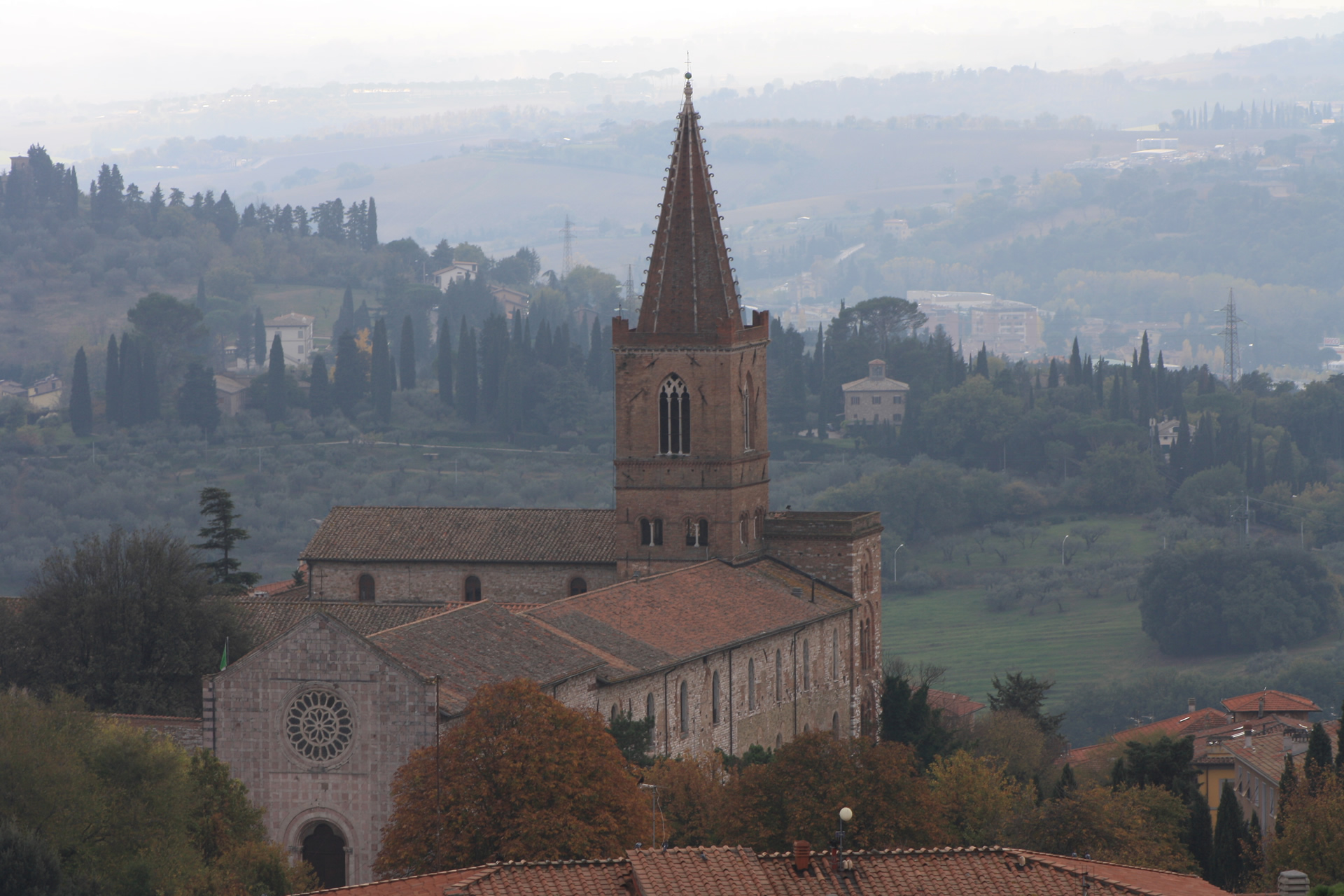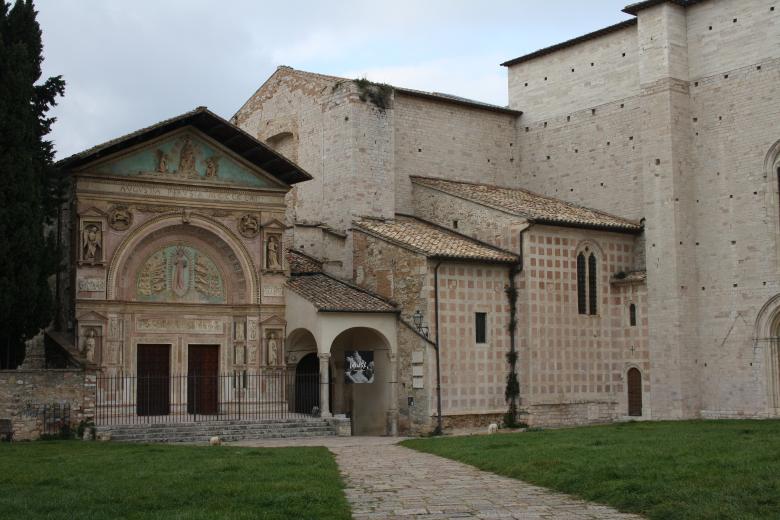The church has a fourteenth-century facade with geometric facing in white and pink marble and a beautiful portal with a rose window. It houses several traces of ancient decorations in the single nave interior with wooden trusses. Two 13th century frescoes, detached from the refectory, were placed on the left wall (Last Supper), and in the apse (Coronation of the Virgin by Marzolini, Master of the Triptych). Still visible on the triumphal arch are remains of frescoes dating from the end of the 13th and the early 14th centuries.
The former monastery, now housing the Italian Army's Foreign Language School, is located to the right of the church. Inside the monastery there is a beautiful cloister, characterized by wide white arches on octagonal pillars with red and white stripes of narrative capitals. Attributed to Matthew Gattaponi (1376) it is one of the finest examples of Cistercian architecture in Italy. In 1567 this monastery was considered one of the most dissolute cloistered complex in Umbria and it was transferred to the Bishop's jurisdiction. It a period of decline - the complex was renovated several times (16th and 18th centuries) and with the Napoleonic requisitions, after the loss of all furnishings, it was reduced to a granary.
































